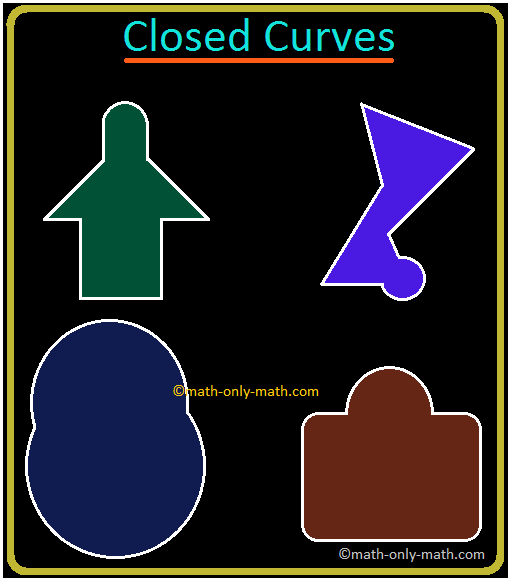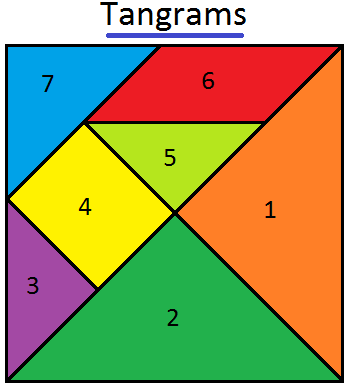Properties of Division
The properties of division of whole numbers are as follows :
Property 1:
If a and b (b not equal to zero) are whole numbers, then a ÷ b (expressed as a/b) is not necessarily a whole number.
In other words, whole numbers are not closed for division.
Verification: We know that dividing a whole number a by a non-zero whole number b means finding a whole numbers c such that a = bc.
Consider the division of 14 by 3. We find that there is no whole number which when multiplied by 3 gives us 14. So, 14 ÷ 3 is not a whole number. Similarly, 12, 5, 9, 4, 37, 6 etc. are not whole numbers.
Property 2:
If a is any whole number, then a ÷ 1 = a.
In other words, any whole number divided by 1 gives the quotient as the number itself.
Division by 1:
When any number is divided by 1, we always get the number itself as the quotient.
For Example:
645 ÷ 1 = 645 7895 ÷ 1 = 7895 85692 ÷ 1 = 85692
Verification: We know that
(i) 1 × 5 = 5
Therefore, 5 ÷ 1 = 5
(ii) 1 × 11 = 11
Therefore, 11 ÷ 1 = 11
(iii) 1 × 29 = 29
Therefore, 29 ÷ 1 = 29
(iv) 1 × 116 = 116
Therefore, 116 ÷ 1 = 116
(v) 1 × 101 = 101
Therefore, 101 ÷ 1 = 101
(vi) 1 × 1 = 1
Therefore, 1 ÷ 1 = 1
Property 3:
If a is any whole number other than zero, then a ÷ a = 1.
In other words, any whole number (other than zero) divided by itself gives 1 as the quotient.
Division by itself:
When any number is divided by the number itself, we always get 1 as the quotient.
For Example:
567 ÷ 567 = 1 5478 ÷ 5478 = 1 24768 ÷ 24768 = 1
Verification: We have,
(i) 13 = 13 × 1
Therefore, 13 ÷ 13 = 1
(ii) 9 = 9 × 1
Therefore, 9 ÷ 9 = 1
(iii) 17 = 17 × 1
Therefore, 17 ÷ 17 = 1
(iv) 123 = 123 × 1
Therefore, 123 ÷ 123 = 1
(v) 21 = 21 × 1
Therefore, 21 ÷ 21 = 1
(vi) 1 = 1 × 1
Therefore, 1 ÷ 1 = 1
Property 4:
Zero divided by any whole number (other than zero) gives the quotient as zero. In other words, if a is a whole numbers other than zero, then 0 ÷ a = 0
Division of 0 by any number:
When 0 is divided by any number, we always get 0 as the quotient.
For Example:
0 ÷ 953 = 0 0 ÷ 5759 = 0 0 ÷ 46357 = 0
Verification : We have,
(i) 0 × 7 = 0
Therefore, 0 ÷ 7 = 0
(ii) 0 × 11 = 0
Therefore, 0 ÷ 11 = 0
(iii) 0 × 17 = 0
Therefore, 0 ÷ 17 = 0
(iv) 0 × 132 = 0
Therefore, 0 ÷ 132 = 0
(v) 0 × 164 = 0
Therefore, 0 ÷ 164 = 0
Note:
In order to divide 6 by 0, we must find a whole number which when multiplied by 0 gives us 6. Clearly, no such number can be obtained. We, therefore, say that division by 0 is not defined.
Property 5:
Let a, b and c is the whole numbers and b ≠ 0, c ≠ 0. If a ÷ b = c, then b × c = a.
Verification: We have,
(i) 15 ÷ 3 = 5
Therefore, 5 × 3 = 15
(ii) 27 ÷ 9 = 3
Therefore, 9 × 3 = 27
(iii) 56 ÷ 7 = 8
Therefore, 7 × 8 = 56
(iv) 99 ÷ 11 = 9
Therefore, 11 × 9 = 99
(i) 75 ÷ 15 = 5
Therefore, 15 × 5 = 75
Property 6:
Let a, b and c be whole numbers and b ≠ 0, c ≠ 0. If b × c = a, then a ÷ c = b and a ÷ b = c.
Verification: We have,
(i) 18 = 3 × 6
Therefore, 16 ÷ 3 = 8 and 16 ÷ 8 = 3
(ii) 42 = 6 × 7
Therefore, 42 ÷ 6 = 7 and 42 ÷ 7 = 6
(iii) 72 = 8 × 9
Therefore, 72 ÷ 9 = 8 and 72 ÷ 8 = 9
(iv) 48 = 8 × 6
Therefore, 48 ÷ 6 = 8 and 48 ÷ 8 = 6
(v) 24 = 12 × 2
Therefore, 24 ÷ 2 = 12 and 24 ÷ 12 = 2
Property 7:
(Division Algorithm) If a whole number a is divided by a non-zero whole number b, then there exists whole numbers q and r such that a = bq + r, where either r = 0 or, r < b.
This can also be expressed as:
Related to this we have the following definitions:
DIVIDEND: The number which is to be divided is called dividend.In this case, a is the dividend.
DIVISOR: Divisor is the number by which the dividend is divided.Here, b is the divisor.
QUOTIENT: The number of times the divisor divides the dividend is called the quotient.
Here, q is the quotient.
REMAINDER: The number which is left over after division is called the remainder.
Here, r is the remainder. Clearly r = a – bq
Using these terms, the division algorithm can be restated as:
Dividend = Divisor × Quotient + Remainder.
Verification: Let a = 159 and b = 8.
By actual division, we find that
Quotient (q) = 19
And, Remainder (r) = 7
Clearly, 159 = 19 × 8 + 7 i.e. a = bq + r.
Note: The divisor can never be zero. Division by zero is not possible.
Representation of Whole Numbers on Number Line
Division as The Inverse of Multiplication
Numbers Page
6th Grade Page
From Properties of Division to HOME PAGE
Didn't find what you were looking for? Or want to know more information about Math Only Math. Use this Google Search to find what you need.
Recent Articles
-
Fundamental Geometrical Concepts | Point | Line | Properties of Lines
Apr 18, 24 02:58 AM
The fundamental geometrical concepts depend on three basic concepts — point, line and plane. The terms cannot be precisely defined. However, the meanings of these terms are explained through examples. -
What is a Polygon? | Simple Closed Curve | Triangle | Quadrilateral
Apr 18, 24 02:15 AM
What is a polygon? A simple closed curve made of three or more line-segments is called a polygon. A polygon has at least three line-segments. -
Simple Closed Curves | Types of Closed Curves | Collection of Curves
Apr 18, 24 01:36 AM
In simple closed curves the shapes are closed by line-segments or by a curved line. Triangle, quadrilateral, circle, etc., are examples of closed curves. -
Tangrams Math | Traditional Chinese Geometrical Puzzle | Triangles
Apr 18, 24 12:31 AM
Tangram is a traditional Chinese geometrical puzzle with 7 pieces (1 parallelogram, 1 square and 5 triangles) that can be arranged to match any particular design. In the given figure, it consists of o… -
Time Duration |How to Calculate the Time Duration (in Hours & Minutes)
Apr 17, 24 01:32 PM
We will learn how to calculate the time duration in minutes and in hours. Time Duration (in minutes) Ron and Clara play badminton every evening. Yesterday, their game started at 5 : 15 p.m.






